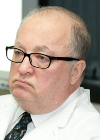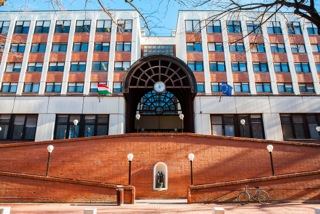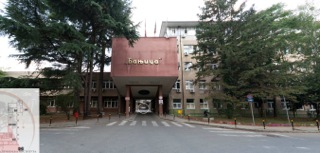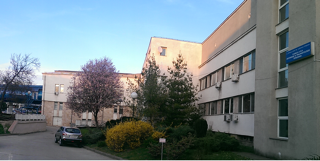SICOT e-Newsletter
Issue No. 68 - June 2014
Articles by SICOT Members
 The orthopaedic common regional project Romania-Hungary-Serbia is a model for beneficial cross-border integration for patients and doctors
The orthopaedic common regional project Romania-Hungary-Serbia is a model for beneficial cross-border integration for patients and doctors Dan V. Poenaru
SICOT Active Member - Timisoara, Romania
After 1990, with the collapse of communism, a reassessment and remodelling of values had taken place and also amongst the relationships in the medical community of the countries in this part of Europe. It is somehow obvious that within Europe or one specific region one patient can benefit from medical help from a geographically closer unit that is not in the country where the patient is insured. This is why several cross-border units for emergency and/or scheduled surgery were created in several Western European countries such as between France and Germany or Belgium, France and Luxembourg. Eastern Europe was for so many years divided by local and regional conflicts that happened behind the Iron Curtain and even now there exist political movements that interfere in the patientâs well-being.
Timisoara, the capital of the Banat region of western Romania, is a strong medical centre with a University of Medicine and Pharmacy, which this year will celebrate 70 years of existence. With over twenty orthopaedic and trauma services in the departments of the region this area is well covered in terms of orthopaedic and trauma care. However, specific fields of orthopaedic care such as spine surgery, arthroscopic surgery and micro-surgery and reconstruction were concentrated in the University hospitals. This same situation happened in the neighbouring hospitals and departments from Serbia and from Hungary. A possibility of offering the best choices to the patients and offering the use of specific facilities for cross-border patients was created more than ten years ago.
The Timis County is bordering neighbours with Hungary and Serbia. Therefore, the first contacts after 1990 were made with the medical centre in Szeged (Hungary), which is 90 km heading west, and Belgrade, respectively, which is located 160 km south west of Timisoara. A series of joint scientific orthopaedic events were grounded together with the Orthopaedic Clinic in Szeged led by Prof Dr Toth Kalman. Exchanges of specialists and resident physicians were made. In my clinic, scoliosis correction surgeries have begun under the guidance of a team of orthopaedic surgeons, our colleagues in Szeged, a collaboration which has continued until today.

Orthopaedic Clinic in Szeged
Timisoara, the capital of the Banat region of western Romania, is a strong medical centre with a University of Medicine and Pharmacy, which this year will celebrate 70 years of existence. With over twenty orthopaedic and trauma services in the departments of the region this area is well covered in terms of orthopaedic and trauma care. However, specific fields of orthopaedic care such as spine surgery, arthroscopic surgery and micro-surgery and reconstruction were concentrated in the University hospitals. This same situation happened in the neighbouring hospitals and departments from Serbia and from Hungary. A possibility of offering the best choices to the patients and offering the use of specific facilities for cross-border patients was created more than ten years ago.
The Timis County is bordering neighbours with Hungary and Serbia. Therefore, the first contacts after 1990 were made with the medical centre in Szeged (Hungary), which is 90 km heading west, and Belgrade, respectively, which is located 160 km south west of Timisoara. A series of joint scientific orthopaedic events were grounded together with the Orthopaedic Clinic in Szeged led by Prof Dr Toth Kalman. Exchanges of specialists and resident physicians were made. In my clinic, scoliosis correction surgeries have begun under the guidance of a team of orthopaedic surgeons, our colleagues in Szeged, a collaboration which has continued until today.

Orthopaedic Clinic in Szeged
Cooperation with Serbia began with a cooperation protocol signed with the Faculty of Medicine in Belgrade and the Institute of Orthopaedics Banjica. The Orthopaedic & Traumatology Clinic hosts 100 beds, seven operating rooms, and one Emergency Care Unit, as well as the possibility of imaging investigations (radiographic, MRI, DXA, musculoskeletal ultrasound).

Institute of Orthopaedics Banjica
The Timis County University Clinic has a mean number of 4,200 beds, with almost 4,000 surgical interventions in orthopaedics and osteoarticular surgery, mainly consisting of traumatology (60% of all cases). The clinic is divided into four compartments: Arthroscopy, Spinal Surgery, Osteoarticular Surgery for haemophilliacs and Functional Recovery. The Orthopaedic Clinics of Szeged and the Banjica Institute also host 100 beds of orthopaedic and trauma care.

Timis County University Clinic
It is worth mentioning the fact that Timisoara and Szeged, being located near the border, have an intense traffic flow, and also a great number of car accidents. This fact also requires an intense cross border cooperation.
A great constant presence in our clinic was the late Prof Dr Zoran Vukasinovic. He introduced the triple pelvic Ganz osteotomy in our clinic, operating on a large number of children with malformations of the musculoskeletal system. We organised common scientific events and exchanged young specialists and resident physicians. We have working relationships with the Orthopaedic Clinics in Nis and Novi Sad.
In 2012 we had the pleasure of organising the Euroregional Conference in Timisoara "Modern Technologies in Orthopaedics and Traumatology" (ADORT) which enjoyed a remarkable presence of specialists from neighbouring countries but also from Russia, Germany, Israel, and France. Colleagues from the orthopaedic hospitals in Belgrade and Szeged are a common, strong and permanent presence in our institution's scientific and academic activities.
Our experience, which is briefly shared hereby, shows that in the southeast European geographical area the medical world can be united, can create bridges of cooperation and closeness, aiming for outstanding scientific and cultural activity.
 Â

Institute of Orthopaedics Banjica
The Timis County University Clinic has a mean number of 4,200 beds, with almost 4,000 surgical interventions in orthopaedics and osteoarticular surgery, mainly consisting of traumatology (60% of all cases). The clinic is divided into four compartments: Arthroscopy, Spinal Surgery, Osteoarticular Surgery for haemophilliacs and Functional Recovery. The Orthopaedic Clinics of Szeged and the Banjica Institute also host 100 beds of orthopaedic and trauma care.

Timis County University Clinic
It is worth mentioning the fact that Timisoara and Szeged, being located near the border, have an intense traffic flow, and also a great number of car accidents. This fact also requires an intense cross border cooperation.
A great constant presence in our clinic was the late Prof Dr Zoran Vukasinovic. He introduced the triple pelvic Ganz osteotomy in our clinic, operating on a large number of children with malformations of the musculoskeletal system. We organised common scientific events and exchanged young specialists and resident physicians. We have working relationships with the Orthopaedic Clinics in Nis and Novi Sad.
In 2012 we had the pleasure of organising the Euroregional Conference in Timisoara "Modern Technologies in Orthopaedics and Traumatology" (ADORT) which enjoyed a remarkable presence of specialists from neighbouring countries but also from Russia, Germany, Israel, and France. Colleagues from the orthopaedic hospitals in Belgrade and Szeged are a common, strong and permanent presence in our institution's scientific and academic activities.
Our experience, which is briefly shared hereby, shows that in the southeast European geographical area the medical world can be united, can create bridges of cooperation and closeness, aiming for outstanding scientific and cultural activity.
 Â